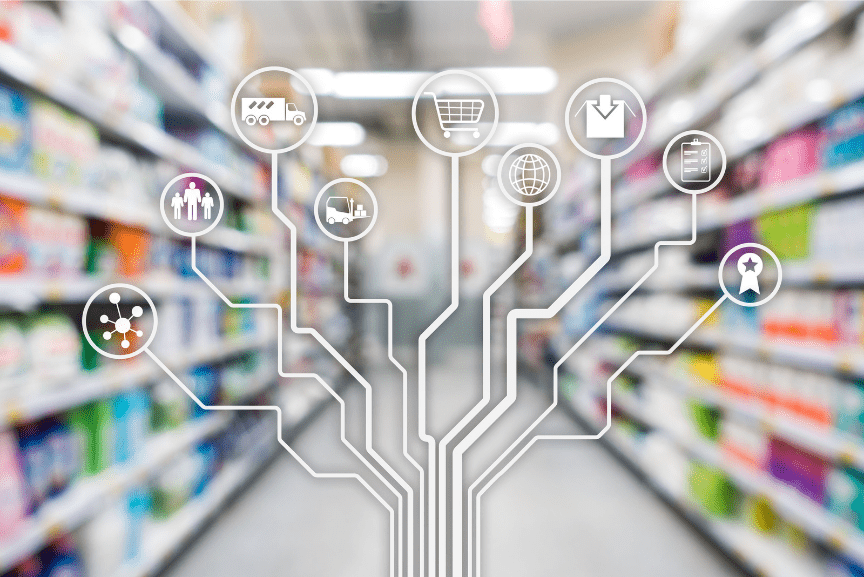The contemporary business environment is characterized by escalating demands on customer service operations. Organizations face the challenge of managing high volumes of inquiries, meeting rising customer expectations for prompt and personalized support, and frequently encountering resource constraints. Traditional customer service methodologies, heavily reliant on human agents, can encounter limitations in scalability and consistent delivery. This can manifest as increased average handling time (AHT) and elevated churn rates.
With the introduction of large language models (LLMs), a transformative solution has emerged: Artificial Intelligence (AI) agents. These intelligent systems possess the capability to comprehend and address customer inquiries without direct human intervention. This article will explore the domain of AI agents in customer support, encompassing their definition, historical evolution, the benefits they offer, their practical applications across industries, key underlying technologies, and future trends. The emergence of AI agents offers the potential to streamline customer service processes and ultimately generate significant business value.
Defining the Intelligent Assistant: What Are AI Agents in Customer Service?
Fundamentally, AI agents in customer support constitute a type of artificial intelligence system specifically designed to comprehend and address customer inquiries autonomously. These sophisticated software systems leverage machine learning (ML) and natural language processing (NLP) to manage a range of tasks, from answering routine questions to resolving complex issues.
Several key characteristics distinguish AI agents. They exhibit a degree of autonomy, proactively pursuing goals and completing tasks on behalf of users. This involves capabilities in reasoning, planning, and retaining information from past interactions or its training corpus. Furthermore, advanced AI agents possess self-refining capabilities, enabling them to learn from experience, adapt their behavior based on feedback, and continuously improve their performance over time. They make decisions based on their understanding of the environment and available data to achieve better results.
AI agents are different from related technologies such as traditional chatbots and AI assistants. Traditional chatbots often operate based on pre- programmed scripts and rules, limiting their capacity to handle complex or nuanced inquiries. AI assistants, while more advanced, are typically designed to collaborate directly with users, performing tasks under user supervision. They can respond to requests, provide information, and suggest actions, but the final decision-making authority generally rests with the user. AI agents, conversely, possess a higher degree of autonomy, capable of operating and making decisions independently to achieve a specific objective. They are designed to handle complex tasks and workflows, while AI assistants and bots are generally more suited for simpler interactions.
The following table illustrates these key differences:
| Feature | AI Agent | AI Assistant | Bot |
|---|---|---|---|
| Purpose | Autonomously and proactively perform tasks | Assisting users with tasks | Automating simple tasks or conversations |
| Capabilities | Can perform complex, multi-step actions; learns and adapts; can make decisions independently | Responds to requests or prompts; provides information and completes simple tasks; can recommend actions but the user makes decisions | Follows pre-defined rules; limited learning; basic interactions |
| Interaction | Proactive; goal-oriented | Reactive; responds to user requests | Reactive; responds to triggers or commands |
This progression from rule-based chatbots to more sophisticated AI agents signifies an advancement towards more intelligent and context-aware customer interactions. As agentic systems become more robust, the potential for AI agents to address complex customer service needs with minimal human intervention also grows.
A Journey Through Time: The Evolution of AI in Customer Service Automation
The automation of customer service has a rich history, evolving in waves over the decades.
The concept of on-demand customer support began with the emergence of call centers in the 1960s. These early centers relied heavily on manual processes, with operators using basic databases to manage customer information. A key development was the introduction of Private Automated Business Exchanges (PABX), which enabled companies to handle a larger volume of calls by routing them to available agents.
The rise of the internet in the 1990s brought about new communication channels, with companies increasingly offering support through email and the emergence of live chat functionalities on websites. This era also saw the development of Customer Relationship Management (CRM) software, which facilitated improved organization and tracking of customer data, although initially primarily utilized for marketing campaigns.
The initial applications of AI in customer service were relatively basic, with the introduction of simple, rule-based chatbots in the early 2000s designed to answer frequently asked questions and provide basic support. The widespread adoption of virtual assistants like Amazon's Alexa, Apple's Siri, and Google Assistant further normalized the use of AI for conversational interactions among consumers. However, these early AI applications had limitations in handling complex or nuanced inquiries.
The more recent era has witnessed the rise of intelligent automation, characterized by the development of sophisticated AI agents. This advancement has been driven by the integration of powerful technologies such as machine learning (ML), natural language processing (NLP), and large language models (LLMs). This has enabled a significant leap from basic chatbots to “chain of thought” reasoner AI agents capable of more human-like interaction and complex problem-solving. There has also been a strategic shift towards proactive and predictive customer success strategies, increasingly powered by AI to anticipate customer needs and potentially improve customer retention rates.
In 2025, a growing number of business leaders are recognizing the potential of generative AI to enhance customer service operations. The development of AI agents capable of autonomously resolving a wide range of customer requests, from simple inquiries to complex issues, represents a significant milestone in the evolution of customer service automation.

Unlocking Efficiency and Satisfaction: Key Benefits of AI Agents
The adoption of AI agents offers numerous advantages, transforming how businesses interact with their customers and manage their service operations.
One of the most significant benefits is enhanced efficiency and productivity. AI agents can handle a substantial volume of customer requests simultaneously without requiring human intervention, freeing up human agents to focus on more complex, nuanced, and strategic tasks that require a personal touch. This not only optimizes resource allocation but also improves overall response times and customer satisfaction (CSAT) scores.
Furthermore, AI agents contribute to improved customer experience by providing prompt, personalized support. They can understand customer queries and sentiment, offering tailored solutions and ensuring consistent service quality. The 24/7 availability and scalability of AI agents are also crucial advantages. Unlike human agents who have working hours, AI agents can provide continuous support around the clock, catering to customers across different time zones and readily scaling to handle peak demand without requiring additional staffing.
Beyond immediate customer interactions, AI agents offer valuable data- driven insights. By analyzing the vast amounts of data generated from customer conversations (i.e., using LLMs to standardize the conversational data into structured formats, then conducting statistical analysis on them using external tools), they can identify trends, recurring issues, and areas where businesses can improve their products, services, or support processes. This data can inform strategic decision-making and lead to proactive problem-solving. Analyzing customer interactions can also lead to a better understanding of customer pain points, which can be addressed to improve customer retention.
Good AI agents also have safeguards built-in to ensure consistency and accuracy in responses. They are programmed to provide sourced information, reducing the risk of human error or language model hallucinations. From a financial perspective, the automation of routine tasks and the increased efficiency achieved through AI agents can lead to significant cost reduction for businesses.
Additionally, AI agents enable personalization at scale. By integrating with backend systems and leveraging customer data such as purchase history and preferences, they can personalize interactions and recommendations, making customers feel valued and understood.
The combination of these benefits creates a compelling value proposition for businesses seeking to optimize their customer service operations, enhance the overall customer experience.
Real-World Impact: Diverse Use Cases of AI Agents in Action
The versatility of AI agents is evident in their growing adoption across a wide range of industries and for various customer support functions.
In traditional customer service, AI agents are effectively handling frequently asked questions, troubleshooting common issues, processing refunds, and providing personalized support, allowing human agents to concentrate on more complex inquiries. For IT support, AI agents can automate routine tasks such as password resets and granting VPN access, resolving common technical difficulties quickly and reducing resolution times. Within HR departments, AI agents are being utilized to answer employee questions about benefits and company policies, as well as to automate onboarding processes, streamlining administrative tasks and improving HR efficiency. In sales and marketing, AI agents analyze real-time data to recommend new products or upgrades based on customer behavior and purchase history, personalizing the shopping experience and potentially driving sales and improving customer lifetime value (CLTV). The healthcare sector is also seeing the application of AI agents for tasks like assisting with appointment scheduling and answering basic health-related questions, enhancing patient experience. In finance, AI agents can track payments, provide personalized status updates, and assist with account-related inquiries. Even the travel industry is leveraging AI agents to assist customers with booking flights and accommodation, and to answer travel-related queries.

How They Work: Deconstructing the Core Components of AI Agents
The functionality of AI agents relies on a sophisticated underlying architecture and several key components working in concert.
The architecture of an AI agent can vary depending on its specific application. For software-based AI agents used in customer support, the architecture typically involves software programs, middleware APIs for integration with other systems, and access to databases containing relevant information.
A crucial first step for any AI agent is contextual awareness and on-demand data availability. They gather data from a variety of sources, including customer interactions across different channels, transaction histories, and even social media, to understand the context and nuances of customer queries. Advanced AI agents can ingest this data in real-time using function- calling or intent-based workflow routing, ensuring that they always have the most up-to-date information to handle inquiries effectively.
Once a goal or instruction is received, the AI agent engages in planning and task decomposition. It breaks down the overall objective into smaller, actionable tasks, determining the necessary steps to achieve the desired outcome. If needed, it will go through a round of information retrieval and processing, where the agent might access internal knowledge bases, external websites, or even interact with other AI models to aggregate the necessary data. The AI agent then proceeds with execution, methodically implementing the planned tasks.
Importantly, many AI agents have the capability for continuous self-learning. They can evaluate their performance, seek feedback, and adapt their strategies based on past experiences to continuously improve their results and optimize performance metrics. Underpinning all these components are key AI technologies, most notably machine learning (ML) algorithms that enable learning and adaptation, natural language processing (NLP) for understanding and responding to human language, and increasingly, large language models (LLMs) that provide advanced capabilities in generating human-like text and understanding context.
Build Agentic Workflows for Customer Service with GPT-trainer
GPT-Trainer is a cutting-edge AI chat builder that empowers businesses to create personalized and efficient conversational AI experiences. Using GPT- Trainer, businesses can harness the power of AI to automate support, capture leads, and personalize engagement.
With GPT-trainer, you can upload various types of documents such as PDFs, Word files, Excel tables, images, and YouTube videos. You can also specify static websites to scrape content from directly. This allows you to leverage your own data to create hyper-personalized conversational interactions.
Through function-calling and API, GPT-trainer can enable advanced workflow automations. If your use case requires custom integrations, GPT- trainer provides custom development support that can link a white-labeled dedicated hosting (via AWS) version of the platform with your existing business logic.
Navigating the Future: Trends and Predictions for AI in Customer Support
The future of AI agents in customer support is poised for significant growth and evolution.
We can anticipate increased adoption of this technology across businesses of all sizes as organizations recognize the substantial benefits they offer in terms of efficiency gains and cost reduction. The trend towards enhanced personalization will continue, with AI agents becoming even more adept at understanding individual customer needs and preferences.
A key development will be the further blurring of lines between human and artificial intelligence, with seamless human-AI collaboration becoming the norm. AI agents will handle routine tasks and provide initial support, while human agents will step in for complex or emotionally sensitive issues, creating a more efficient and effective overall support system, optimizing resource allocation.
Advancements in generative AI, such as the recent release of sophisticated models (e.g., reasoning models like OpenAI’s o1 and o3-mini, and DeepSeek’s R1, etc.), promise to further refine customer interactions by enabling AI agents to generate highly personalized and contextually relevant responses. Better models would allow the AI to engage in conversations that seem more natural and human-like. Along those lines, there is also a growing emphasis on equipping AI agents with emotional intelligence. This would enable them to better understand and respond to customer emotions with greater empathy, leading to stronger customer connections.
Conclusion: Embracing the Power of Intelligent Automation
AI agents represent a significant evolution in customer service technology, moving beyond the limitations of traditional chatbots to offer truly intelligent and autonomous support. They are defined by their ability to understand and respond to customer inquiries without human intervention, leveraging advanced technologies like machine learning and natural language processing.
The benefits of AI agents are quite numerous, including improved efficiency (reduced AHT), instantaneous response, 24/7 availability (reduced first contact abandonment rate), data-driven insights, and operating cost reduction. Their applications are diverse, spanning across various industries and corporate support functions.
Looking to the future, we anticipate widespread adoption, enhanced personalization, seamless human-AI collaboration, and a greater focus on emotional intelligence.

